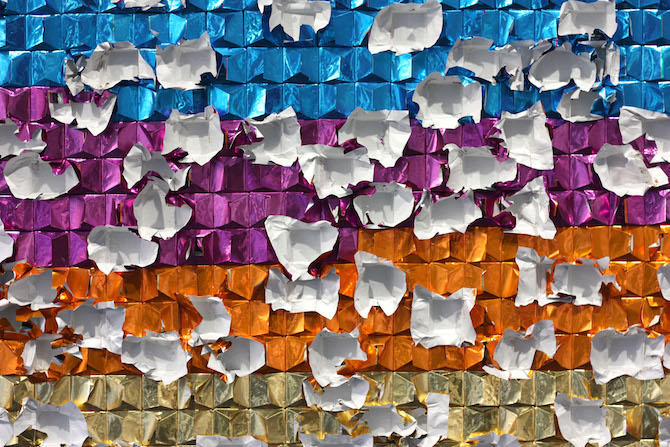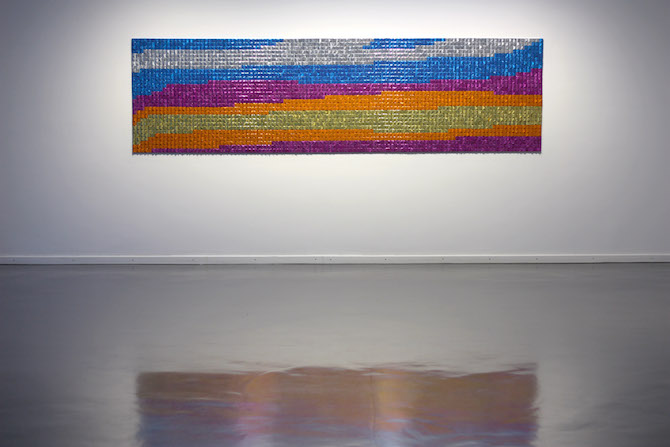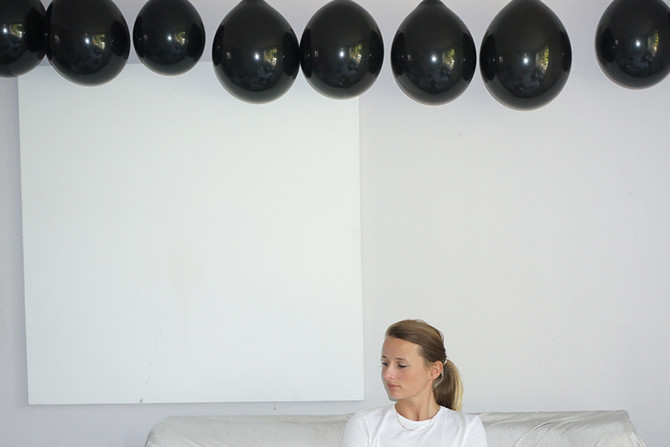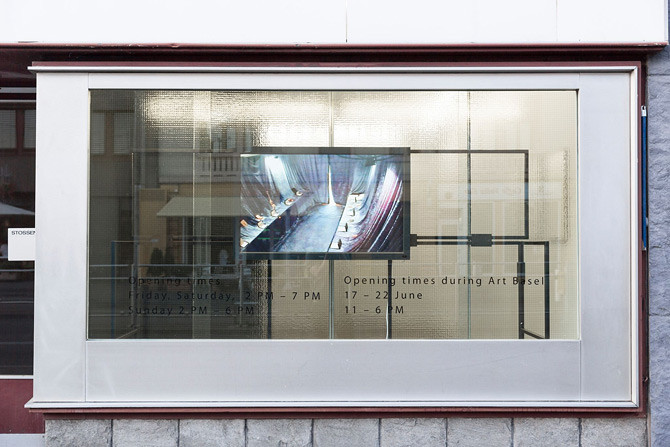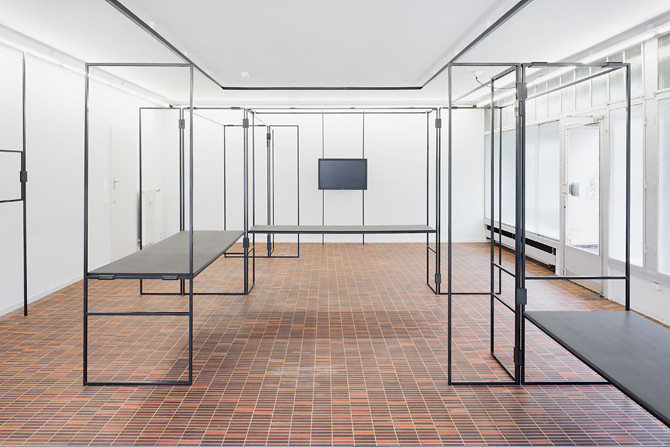Rainald Schumacher and Nathalie Hoyos at booth Art Collection Telekom; © Deutsche Telekom AG; photos by Norbert Ittermann
– In Collaboration with Deutsche Telekom AG –
Two giant and viciously looking pigs float above a cityscape, opening their mouths and chewing on the architectural fundament of civil life. A hand cuts off a pig’s tail; the blood spreads into the sky. Painted inside the booth of
Art Collection Telekom, the 1976-born Ukrainian artist
Volodymyr Kuznetsov created the work during the installation phase for
Art Cologne 2015. It refers to Koliyivshchyna, a bloody Ukrainian rebellion against Poland in 1768; and it asks what could be the next step after such immense brutality.
Assembled by the curators
Nathalie Hoyos and
Rainald Schumacher, and directed by
Antje Hundhausen, the five-year-old
Art Collection Telekom emphasises the contemporary art scene in Eastern Europe. Originally initiated on the occasion of the Telekom’s recently established national companies for communication services in countries such as Romania and Poland, their bonds to Eastern Europe now imply a visual dialogue and exchange.
The collection neither focusses on decorative works for corporate headquarters, nor on big names. It consists of art works that intend to create a cultural understanding, such as the works by 1986-born Kosovan artist Petrit Halilaj, who currently has a solo show at Kölnischer Kunstverein. One of the collection's major concerns is the support of young Eastern European artists, and especially those, whose works are controversially raising the awareness of social change. Nathalie and Rainald, who are both experienced in managing large collections, have been a part of the small team from the beginning on. I spoke with them about their curatorial work for the collection.

 All works are photographs © Mia Boysen; courtesy the artist and Mirko Mayer / m-projects, Cologne
All works are photographs © Mia Boysen; courtesy the artist and Mirko Mayer / m-projects, Cologne

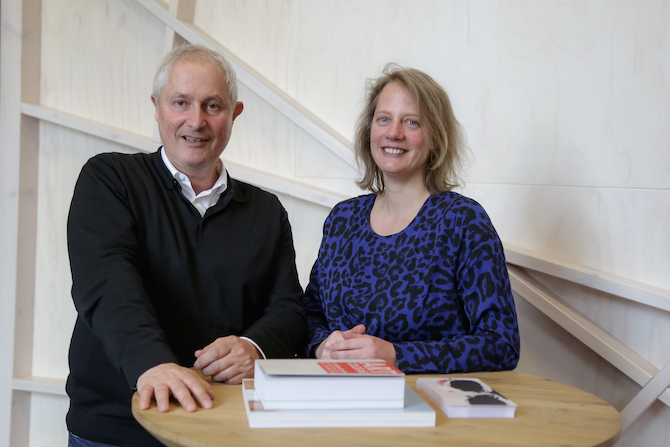
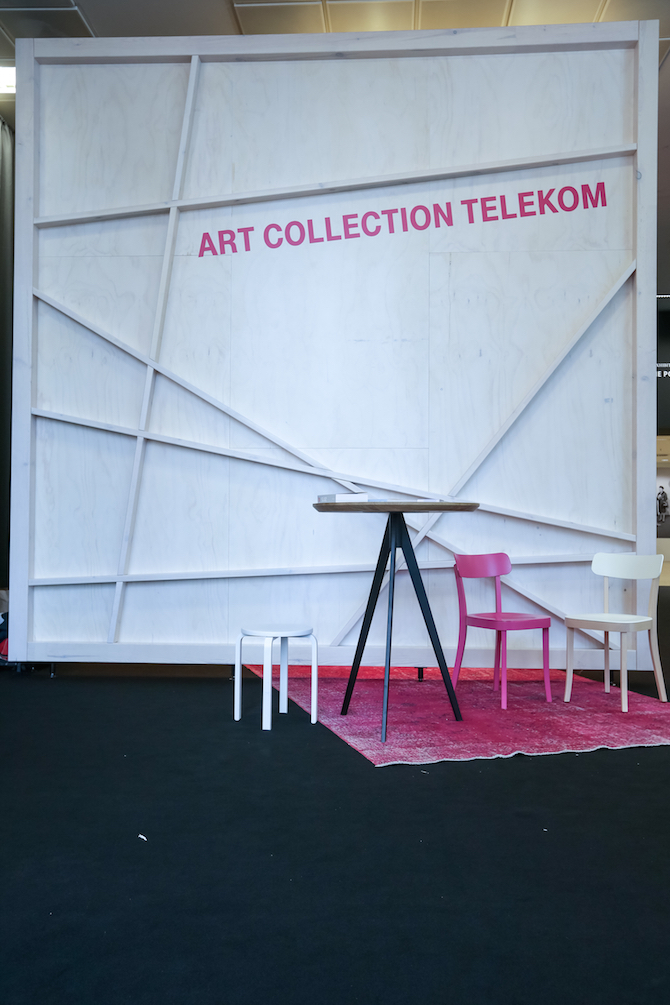
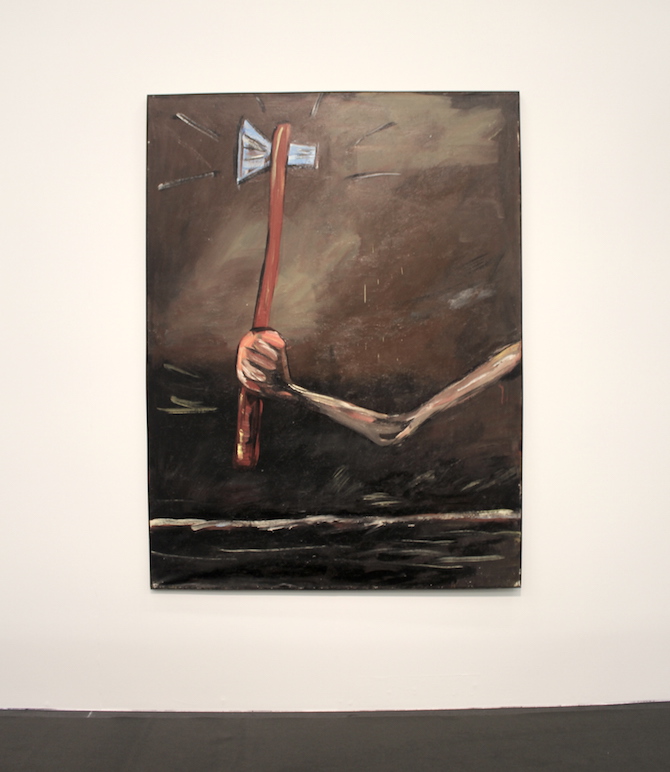 Walter Dahn at booth Sprüth Magers, Berlin, London
Walter Dahn at booth Sprüth Magers, Berlin, London
 Rose Eken at booth The Hole, NY and V1 Gallery, Copenhagen
Rose Eken at booth The Hole, NY and V1 Gallery, Copenhagen
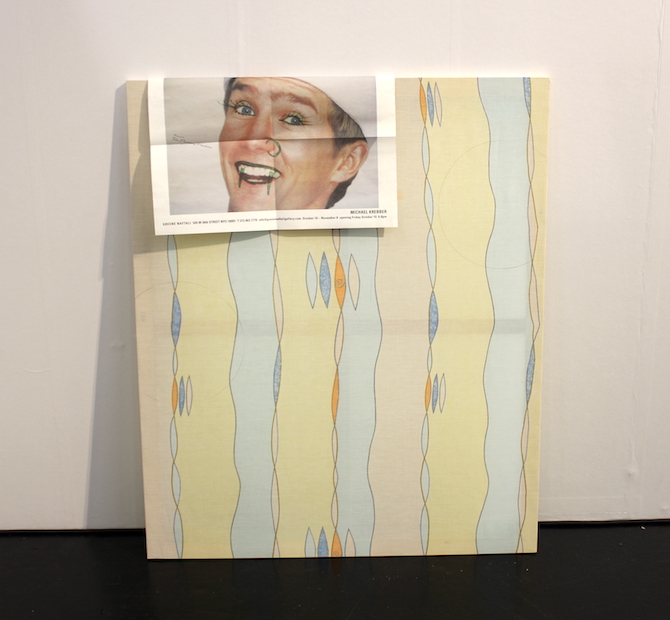 Michael Krebber at booth Galerie Nagel Draxler, Köln, Berlin; all works © and courtesy the artists and galleries; photos © artfridge
Michael Krebber at booth Galerie Nagel Draxler, Köln, Berlin; all works © and courtesy the artists and galleries; photos © artfridge